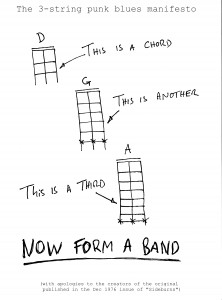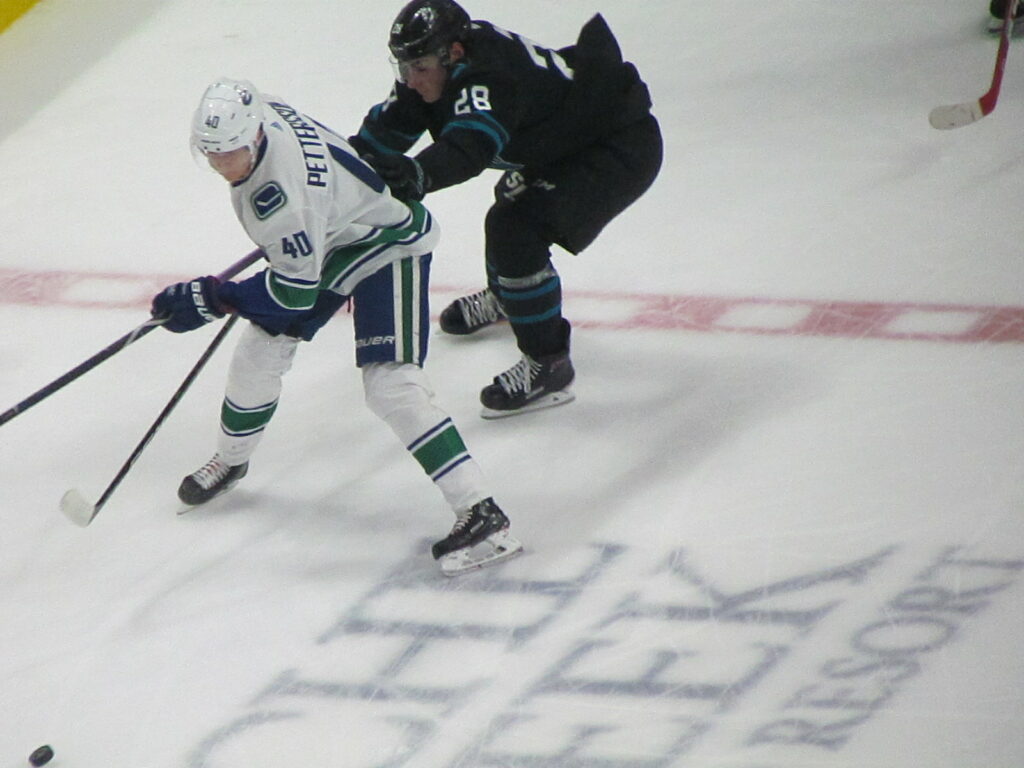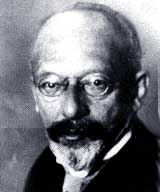Chapter 7. Groups and Organizations
7.1 How is Society Possible?
One of the basic questions raised in sociology is: How is society possible? What holds society together? What gives society form and continuity? This was the classical sociologist Georg Simmel’s basic question. In his essay, “The Problem of Sociology,” Simmel (1908/1971) begins by saying: “Society exists where a number of individuals enter into interaction.” This would appear to be a truism. After all, what else could society be?
However, a few pages later, he reaches the conclusion that:
With each formation of parties, with each joining for common tasks or in a common feeling or way of thinking, with each articulation of the distribution of positions of submission and domination, with each common meal, with each self-adornment for others — with every growth of new synthesizing phenomena such as these, the same group becomes “more society” than it was before. There is no such thing as society “as such”; that is, there is no society in the sense that it is the condition for the emergence of all these particular phenomena. For there is no such thing as interaction “as such” — there are only specific kinds of interaction. And it is with their emergence that society too emerges, for they are neither the cause nor the consequence of society but are, themselves, society. The fact that an extraordinary multitude and variety of interactions operate at any one moment has given a seemingly autonomous historical reality to the general concept of society (Simmel, 1908/1971, emphasis is the editor’s).
There is no such thing as society as such. There is no such thing as “society” outside of the moments of interaction between the individuals that compose it. Society is the name we give to the “extraordinary multitude and variety” of specific interactions between individuals that are occurring at any particular moment.
If society does not exist outside of these simultaneous interactions, Simmel’s problem of sociology is clear. Sociology, as the “science of society,” appears to be a discipline without a solid object of study! But what he meanss is that ‘Society’ is not an object or a thing; it is just the name people have given to the multitude of ongoing, unfinished processes of interaction between individuals. This means sociologists have to ask the questions of sociology at a more basic level. How do these processes hold together and take shape? How are sociologists able to recognize and talk about different social phenomena like the formation of parties, the joining together in common tasks, the creation of hierarchies, the wearing of jewellery, etc.? If society is nothing but a number of individuals who have entered into specific interactions, how do widespread norms of behaviour, structured relations of power, and predictable relationships between social variables form? How do sociologists find something in this “extraordinary multitude and variety of interactions operat[ing] at any one moment” to grasp hold of and study?

Punk rock in the 1970s saw itself returning to the roots of rock and roll. Part of this was to simplify the structure of the music to renew rock and roll as a form of music. This is a good metaphor for how Simmel understands social interaction between individuals as both mutual attunement and an act of creation. For a coherent interaction to take place, everyone tunes their instruments together (at least somewhat) and plays the same notes and chords. To play music together a group needs to get in tune and find a rhythm. However, this attunement also enables everyone to introduce new elements into the interaction and to invent new musical or social forms (or reinvent old ones). Along with the new musical form of punk rock came new lyrical and thematic contents: “the tendency towards wilful desecration and the voluntary assumption of outcast status which characterized the whole punk movement” (Hebdige, 1979).
Simmel’s solution to the problem of how society is possible is based on the idea that the mutual influence of individuals on each other during interaction creates mutual attunements, not unlike a band tuning its instruments. As Randall Collins puts it, people like to come together and get caught up in a mutual focus of intention. Automatically they become “entrained” in each other’s bodily rhythms and emotions and begin to match each other (Collins, 2004). This is so automatic and unconscious that one would be tempted to describe it as human nature. The process of mutual influence in turn creates enduring, recognizable social forms like a genre of music, a business lunch, a university lecture class, a birthday party, etc., (hence the term formal sociology to describe Simmel’s work). People can say to themselves, “I know what this is, it’s a birthday party,” and then they know what to expect, how to act, what types of things people will say and do, how to feel emotionally, what the ‘rules’ are, etc.
We will discuss Simmel’s formal sociology later in the chapter. In general, the solution to the question — How is society possible? — differs depending on the level of analysis used to pose the question. Excluding the global for the time being (see Chapter 1. An Introduction to Sociology), sociologists describe group behaviour at three levels of social interaction: micro, meso, and macro.
Micro Meso Macro
At the micro-level of analysis, the focus is on the social dynamics of face-to-face interaction: How are specific individuals in specific locations able to interact in a coherent and consistent manner? For example, how is a conversation possible? How does a person know when it is their turn to speak or when someone has been speaking too long? Various types of social interaction at the micro-level were discussed in Chapter 6. Social Interaction.
At the meso-level of analysis, the focus shifts to the characteristics of specific networks, groups, and organizations (i.e.,collectivities). The meso-level refers to the connection, interaction and ongoing coordination of numerous different social roles simultaneously. When sociologists speak of a school, for example, they need to move beyond the analysis of single face-to-face interactions — interactions in a single setting where participants are co-present — to examine the combined interactions and relationships between students, parents, teachers, and administrators. At this level, sociologists ask, how do the properties of different types of local social collectivity affect or alter the behaviour of individuals? Why does an individual’s behaviour change when they are in a collectivity? How do collectivities constrain or enable their members to act in certain ways? What is it about collectivities that entice people to conform? In these meso-level examples sociologists are still talking about specific, identifiable individuals — albeit not necessarily in direct face-to-face situations — but take into account the complex entwinement of their lives to account for their behaviour.
Finally, at the macro-level of analysis, the focus is on the properties of large-scale, society-wide social interactions: the dynamics of institutions, classes, or whole societies. The macro therefore extends beyond the immediate milieu or direct experience of individuals. These large-scale social structures might be nothing more than the aggregations of specific interactions between individuals at any particular moment as Simmel argues. However, the properties of structures, institutions, and societies — described by statistical analysis, cross-cultural comparisons, or historical research — also have a reality that Emile Durkheim called sui generis (i.e., of their own kind). The properties that make society possible at a macro scale cannot be explained by, or reduced to, their components without missing their most important features.

To illustrate the micro, meso, and macro distinction, consider how a sociologist would analyze the game of hockey. At the micro-level of analysis, the sociologist would be interested in the interpersonal structures and role-play that governs how various specific individuals (players, coaches, managers, owners, fans, etc.) interact face to face. With respect to the players, how do they interact on the ice in a coherent manner? How do they coordinate their activities to win games? How do they make the game work? In part, this analysis is a matter of simply knowing the rules of the game and each player’s role or position (center, winger, defense, goalie). From a different angle, the analysis has to do with the players practicing the plays by which they move the puck out of the defensive zone, enter the offensive zone, defend against offensive plays, cycle the puck behind the net, set up a power play, etc. From another angle, the analysis is also a matter of the personal dynamic between individual players, their ability to read each other’s cues, to call out on the ice, to anticipate each other’s moves, and to work off each other’s strengths, etc. (or the failure to do so). In this regard, hockey is a symbolic interaction, which depends on individuals sending signals and interpreting signals. It is, after all, a game based on chasing a small disk of rubber around a frozen surface of ice on skates. It is thoroughly symbolic.
At the meso-level of analysis, a sociologist takes a slightly wider view. Its focus lies between micro-level face to face interactions and macro-level society-wide phenomena. The meso-level of analysis takes into account group or organization dynamics involving a number of different, simultaneously interacting social roles such as the relationship between a team, local media and fans. How does local media reporting on a team’s fortunes and “story lines” engage with the feelings of both team members and fans for example? Or, focusing on fans as a group, what are the social dynamics of local fandom? How and why do fans get so emotionally involved in the fortunes of their favourite team? How do they sort themselves into categories — “true” fans and “occasional” fans — and with what consequences? How do team rivalries between fans develop? Similarly, the sociologist might be interested in the hockey team as a type of local institutional arrangement of roles that organizes its members by collectively defining roles, functions, norms, official and informal rules, hierarchical relationships, and channels of communication, etc. How are these relationships coordinated on an ongoing basis to produce 80 hockey games in a season?
The meso-level sociologist might also be interested in trying to define what defines hockey as a type of activity — a “game.” Roger Caillois (1961) noted that games, or what Simmel called the “play forms” of association, constitute a separate and unique type of activity. People cross a boundary whenever they leave the ordinary world of everyday life to enter the zone of play. In particular, games are defined by six characteristics:
-
They are free (playing cannot be obligatory),
-
They are separate (play is distinct from ordinary life),
-
They are uncertain (outcomes cannot be determined in advance),
-
They are unproductive (play by itself creates neither goods nor wealth),
-
They are governed by rules (under conventions that suspend ordinary laws), and
-
They are make-believe (they partake in a second reality or a “free unreality”) (Caillois, 1961).
In part, due to the distinction between games and normal life, activities like the use of violence and the infliction of injury — that would be punishable by law off the ice — are events that are frequently celebrated (or at most deplored) when they occur on the ice. It is the status of hockey as a game that makes the issue of its violence both ambiguous and subject to arbitrary assessments and punishments.
At the macro-level of analysis, the sociologist would be interested in how hockey is structured by the type of society in which it is embedded. The Micmac game of wolchamaadijik, which is cited as an early stick and ball progenitor of Canadian hockey, was played in the context of ceremonial exchanges between native tribes (Rand, 2005). NHL hockey, on the other hand, is a capitalist enterprise, and as such, it is a product or commodity produced for sale on the market for profit. The commodity is the spectacle of the hockey game, which fans pay to see and advertisers pay to use as a vehicle for promoting their products. Therefore, the organization and dynamics of the sport are defined by the logic of capital as Marx defined it — a logic in which teams are competitive corporations that invest in, buy and sell their players like any other asset; in which team hometowns are assessed in terms of their viability as profitable markets (hence the oddity of having teams based in Florida or California where natural ice probably has not existed for 10,000 years); in which the logic of class struggle periodically leads to disruptions in play (such as lock-outs and strikes); and in which an elaborate set of regulations (like salary caps and organized draft picks) are instituted by the league to ensure the viability of the competition and manage the excesses and crises that are tendencies of capitalist accumulation.
Making Connections: Classical Sociologists
Georg Simmel and Formal Sociology

Georg Simmel (1858–1918) was an early German sociologist and contemporary of Max Weber. He developed what he called formal sociology, or the sociology of social forms, in order to understand how a collection of individuals driven by their own individualistic interests could coalesce into a group with common purposes and then persist and develop through time. When he said that “society exists where a number of individuals enter into interaction” (1908/1971), he meant that whenever people gather, something happens that would not have happened if the individuals had remained alone. They begin to “correlate their condition” with that of others. They influence others and are influenced in return. A “reciprocity of effects” or “reciprocal influence” occurs that Simmel calls “sociation.” People attune themselves to one another in a way that is very similar to musicians tuning their instruments to one another so they can play a song. Like musicians playing a song, a pattern or form of interaction emerges that begins to guide or coordinate the behaviour of the individuals. Social interactions are society’s songs.
Key to Simmel’s analysis is the distinction he makes between the contents and forms of sociation. Individuals enter into interaction on the basis of their specific drives, needs, purposes, or interests (erotic, spiritual, acquisitive, defensive, playful, etc.). He defines these specific factors as the contents of the interaction. As Simmel says, “In themselves, these materials which fill life, these motivations which propel it, are not social… strictly speaking”(1908/1971). It is “only when they transform the mere aggregation of isolated individuals into specific forms of being with and for one another… in which individuals grow together into a unity and within which their interests are realized” that these contents become social (emphasis is the editor’s).
Therefore, the forms of sociation are the true objects of sociology because only through these forms can the social (i.e., companionship or “reciprocal influence”) be said to exist. Simmel (1908/1971) notes that innumerable types of forms are possible, including “superiority, subordination, competition, division of labour, formation of parties, representation, inner solidarity coupled with exclusiveness from the outside,” etc. These forms are the patterns of behaviour that guide individuals’ actions in different social settings. Therefore, his analysis shifts from the micro-level to the meso- and macro-levels when he posits how the forms themselves endure and work on the individuals who compose them.
An example Simmel uses is of a cocktail party where a subtle set of instructions begins to emerge which defines what can and cannot be said. In a cocktail party where the conversation is light and witty, the effect would be jarring if someone suddenly tried to sell you an insurance policy or confided about the spousal abuse they had suffered. The person would be thought of as being crass or inappropriate. Similarly, in the pleasant pastime of flirtation, if one of the parties began to press the other to consummate the flirtation by having sex, the flirtation would be over. Flirtation is a form of interaction in which the answer to the question of having sex — yes or no — is perpetually suspended. Each social form has its own subtle set of instructions, which may not be written down or even consciously acknowledged, but enable the participants to orient themselves to each other in mutual attunement.

In both examples, Simmel argues that social interaction takes on a specific form. Both are examples of what he calls the play form of social interaction, or pure sociability: the pleasure people experience from the mere fact of being together, regardless of the content of the interaction (Simmel, 1910/1971). Mutual attunement is enjoyable for its own sake over and above the specific purposes of an interaction. If the cocktail party conversation suddenly turns to a business proposition or an overly personal confession, it is no longer playful. The underlying form of the interaction has been violated, even if the participants were not consciously aware that they had adopted a play form of interaction.
Simmel proposed that sociology would be the study of the social forms that recur in different contexts and with different social contents. The same play form governs the interaction in two different contexts with two different contents of interaction: one is the free-ranging content of polite or witty conversation (the cocktail party form); the other is the drive or content of sexual desire (the flirtation form). Different contents or interests can be realized in different forms and vice versa with quite different consequences for the individuals involved. The same erotic impulse (content) can be expressed socially through the forms of a flirtation, a casual sexual relationship, a dating relationship, a marriage, or a transaction with a prostitute. On the other hand, the same form of competition can organize the impulse to play hockey, to gain financially, to learn, to find a sexual partner, or to dress stylishly. The emphasis on forms is why Simmel called his approach to the study of society formal sociology.
Simmel’s work on social forms was not just confined to micro-level interactions. He developed an analysis of the tragedy of culture in which he argued that the cultural creations of “subjective culture” — like the emergent social forms created by people in their face-to-face interactions, as well as the forms of art, music, literature, political analyses, etc. — tended to detach themselves from lived experience and become fixed and elaborated in the form of “objective culture” — the accumulated products of human cultural creation. There are intrinsic limits to an individual’s ability to assimilate, organize, appreciate, and make sense of these forms. As the quantity of objective culture increases and becomes more complex, it becomes progressively more alienating, incomprehensible, and overwhelming. It takes on a life of its own and the individual can no longer see him- or herself reflected in it. Music, for example, can be enriching, but going to an orchestral performance of contemporary music can often be baffling, as if you need an advanced music degree just to be able to understand that what you are hearing is music.
Media Attributions
- Figure 7.3 Now Form A Band by Mark Cottle, via Airburst, is licensed under a CC BY-SA 2.0 UK licence.
- Figure 7.4 Elias Pettersson and Timo Meier by Dinur is used under 2.0 Generic CC BY-NC-ND 2.0 licence.
- Figure 7.5 File:Simmel 03.jpg, via Wikimedia Commons, is in the public domain.
- Figure 7.6 …more party animals, by James Vaughan, via Flickr, is used under a CC BY-NC-SA 2.0 licence.

